Bhutashuddhi, Bhūtaśuddhi, Bhuta-shuddhi: 16 definitions
Introduction:
Bhutashuddhi means something in Hinduism, Sanskrit, Marathi. If you want to know the exact meaning, history, etymology or English translation of this term then check out the descriptions on this page. Add your comment or reference to a book if you want to contribute to this summary article.
The Sanskrit term Bhūtaśuddhi can be transliterated into English as Bhutasuddhi or Bhutashuddhi, using the IAST transliteration scheme (?).
In Hinduism
Ayurveda (science of life)
Rasashastra (Alchemy and Herbo-Mineral preparations)
Source: Google Books: The Alchemical BodyBhūtaśuddhi (भूतशुद्धि) refers to the “preliminary purification of the divinities” (residing in each of the five elements).—The term Bhūtaśuddhi has a much more extended application in the realm of tantrism, where it also forms an important element of worship and initiation. In tantric ritual, bhūtaśuddhi refers to the preliminary purification of the divinities residing in each of the five elements (bhūtas) that make up the body.
Here, bhūtaśuddhi is the purification of both a mesocosmic worship site—once again referred to as a “field,” kṣetra—and the microcosmic body of the worshipper himself (when the two are not identified), a situation that mirrors that of the twofold Vedic preparation of sacrificial ground and the sacrificer’s person Both are dessicated, “blown out,” and burned up before being cleansed with water and flooded with “nectar,” processes which, identified with the dissolution of the mundane self, constitute the first step towards the creation of a new divinized self.
Here, the lower elements of earth, water, fire, and air, are successively imploded into their higher emanates, until there only remains the most sublime element n the pentadic hierarchy. This is ether, the empty space left by this dissolution, within which the tantric practitioner will establish, through visualization techniques and the planting of seed mantras (bīja), a new world at the center of which he will construct the bod of that divinity with whom he will come to identify himself.
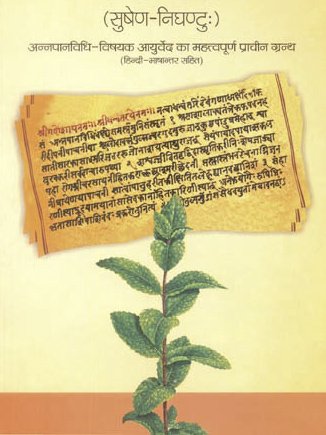
Āyurveda (आयुर्वेद, ayurveda) is a branch of Indian science dealing with medicine, herbalism, taxology, anatomy, surgery, alchemy and related topics. Traditional practice of Āyurveda in ancient India dates back to at least the first millenium BC. Literature is commonly written in Sanskrit using various poetic metres.
Shaktism (Shakta philosophy)
Source: Wisdom Library: ŚāktismBhūtaśuddhi (भूतशुद्धि):—The Sanskrit name of a tantric ritual translating to “Purification of Gross Elements”.
Source: Brill: Śaivism and the Tantric Traditions (shaktism)Bhūtaśuddhi (भूतशुद्धि) refers to the “purification of the gross elements”, and formed a part of the Navarātra Tantric ritual (an autumnal festival of the warrior goddess Caṇḍikā).—On Mahāṣṭamī is the worship of the Nine Durgās, the eight mothers, the sixty-four Yoginīs, purification of the gross elements (bhūtaśuddhi), installation of mantras on the body; [...] Goddess is believed to morph into a more uncontrollable presence requiring constant placation.—Various 8th century sources refer to rituals such as bhūtaśuddhi, for example: Devīpurāṇa, Kālikāpurāṇa, Kṛtyakalpataru, Durgābhaktitaraṅgiṇī, Durgāpūjātattva, Durgāpūjāviveka, Bhadrakālīmantravidhiprakaraṇa in Sanderson (2007); account of the Durgā Pūjā in Kelomal, West Bengal (Nicholas 2013).
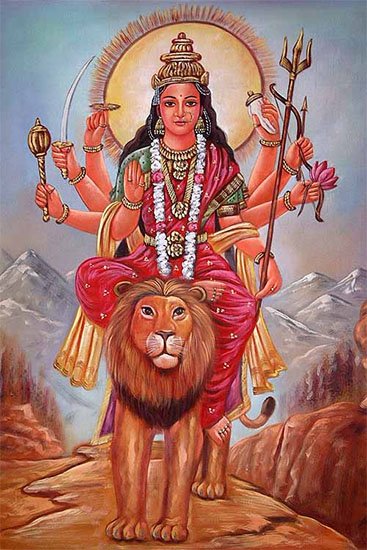
Shakta (शाक्त, śākta) or Shaktism (śāktism) represents a tradition of Hinduism where the Goddess (Devi) is revered and worshipped. Shakta literature includes a range of scriptures, including various Agamas and Tantras, although its roots may be traced back to the Vedas.
Purana and Itihasa (epic history)
Source: Wisdom Library: PurāṇasBhūtaśuddhi (भूतशुद्धि) refers to the “purification of the elements” of the body, by means of respiratory attraction and replacement. It is used throughout vedic and purāṇic literature.
Source: archive.org: Shiva Purana - English TranslationBhūtaśuddhi (भूतशुद्धि) refers to the “purificatory rite of the Bhūtas”, according to the Śivapurāṇa 2.1.13, while explaining the mode of worshipping Śiva:—“[...] the householders (gṛha) shall perform every rite according to prescribed rules (niyama). After performing the purificatory rite of the Bhūtas [viz., bhūtaśuddhi], the installation of the idol (prāṇapratiṣṭhā) shall be performed”.
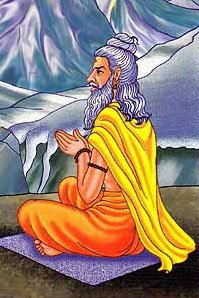
The Purana (पुराण, purāṇas) refers to Sanskrit literature preserving ancient India’s vast cultural history, including historical legends, religious ceremonies, various arts and sciences. The eighteen mahapuranas total over 400,000 shlokas (metrical couplets) and date to at least several centuries BCE.
Vastushastra (architecture)
Source: McGill: The architectural theory of the MānasāraBhūtaśuddhi (भूतशुद्धि, “elemental purification”) refers to a rtiual, following kumbhābhiṣeka, that completes the trasnference of Śiva as deity manifest in the image, according to Mānasāra chapter 70.—Accordingly, the image is adorned with c1othes, ornaments and flowers, and anointed with sandal paste. Incense and lamp are waved before it amidst music, song and dance. The sthapati then “places” the mātṛkākṣaras on his body from head to heart and all other letters (the consonants and half-vowels) from feet ta the upper limit (heart), and also the thirty-eight kalās, here to mean “signs of esoteric significance”, on his limbs. By placing the syllables on his body, the sthapati conducts the rite of bhūtaśuddhi, purification of elements, that in turn purifies and prepares him for worship.
The ritual is following by śivārcana.
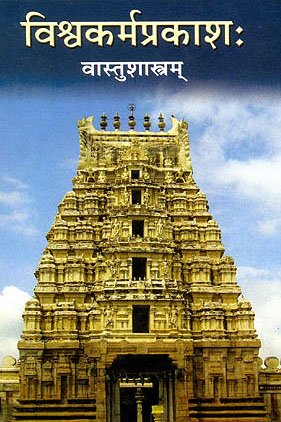
Vastushastra (वास्तुशास्त्र, vāstuśāstra) refers to the ancient Indian science (shastra) of architecture (vastu), dealing with topics such architecture, sculpture, town-building, fort building and various other constructions. Vastu also deals with the philosophy of the architectural relation with the cosmic universe.
Vaishnavism (Vaishava dharma)
Source: Pure Bhakti: Arcana-dipika - 3rd EditionBhūtaśuddhi (भूतशुद्धि) refers to the “purification of oneself”, according to the Arcana-dīpikā (manual on deity worship), while explaining procedures performed in the morning.
Before arcana, one purifies oneself [bhūtaśuddhi] by thinking in the following way:
“By constitution I am an eternal servant of Śrī kṛṣṇa, but by some misfortune, i became averse to Him since time immemorial. Having thus identified myself as a material body in this illusory existence, and having been trapped in this repeated cycle of birth and death, i was burning in the blazing fire of the threefold miseries. However, by great fortune–that is, by the mercy of śrī guru–I have come to understand my identity as a minute, atomic spiritual particle, an eternal servant of Śrī Kṛṣṇa, completely aloof from the gross and subtle bodies. Now, by the order of śrī gurudeva, under his shelter, i have obtained the fortune of serving Śrī Guru-Gaurāṅga and Śrī Rādhā-Vinoda-Bihārījī.”
With this mood, while meditating on the soul within, recite the mantra for purification of oneself [bhūtaśuddhi-mantra].
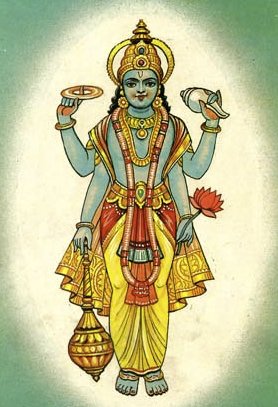
Vaishnava (वैष्णव, vaiṣṇava) or vaishnavism (vaiṣṇavism) represents a tradition of Hinduism worshipping Vishnu as the supreme Lord. Similar to the Shaktism and Shaivism traditions, Vaishnavism also developed as an individual movement, famous for its exposition of the dashavatara (‘ten avatars of Vishnu’).
Pancaratra (worship of Nārāyaṇa)
Source: archive.org: Catalogue of Pancaratra Agama TextsBhūtaśuddhi (भूतशुद्धि) or “purification of the spirits” is the name of the eleventh chapter of the Agastyasaṃhitā (agastya-suīkṣṇa-saṃvāda edition), an ancient Pāñcarātra Āgama text dealing with the worship of Rāma, Sītā, Lakṣmaṇa and Hanumān.
Description of the chapter [bhūtaśuddhi]: Continuing his instructions, Agastya says that, further, before worshipping, one should purify himself bodily as well as internally in order to qualify as a worshipper. To do this purification, yoga is employed. Also, preliminary to worship, the instruments and objects used in worship are to be cleansed by prokṣaṇa and kṣālana. Only when such matters are taken care of will God be effectively worshipped; otherwise all the rites will be futile. Thereupon the nyāsas called mātṛkā, keśavādi, tattva, mūrtipañjara, ṛṣichhandas, mantradevatā, and ṣaḍaṅga are done along with repetition of their mystic syllables, after which God is to be contemplated and acknowledged by offering everything one has to Him. His retinue is also (mentally) honored.
Next regular, external or liturgical worship [bāhyapūjā] is arranged for by securing a platform upon which a maṇḍala-design is disposed. The maṇḍala-design is to be of the eight-petalled lotus motif, surrounded by a rectangle and other designs. The finished maṇḍala-design is worshipped and a siṃhāsana-seat is placed on it and festooned, etc. While the ultimate benefits [phala] enjoyed by those who do bāhyapūjā are material prosperity, nonetheless it is normal at this point that folks gather around this center of worship and make joyful noises with music and song solely for the pleasure of Rama.
For the (bāhya-) pūjā itself, flowers, tulasī, etc. are gathered, vessels with pure water are strategically placed, Vedic scholars are invited to be present the worshipper spreads a tiger-skin and sits on it, and offers a garland to Rāma. Sandal-paste, other flowers, etc., are then offered to the deity. A particular posture must be assumed when Vināyaka and others are worshipped. After the preceptor has been duly honored, the devotee then salutes the deity by clapping is hands thrice. The demons and demigods are pacified with mantras, and the five elements [bhūtas] are then purified also with mantras. This latter is what is known as “bhūtaśuddhi [bhūtaśuddhiḥ]”—without which all other rites like japa and homa are futile. Other purifications are also mentioned in regard to the worshipper’s limbs; he purifies his feet by Circumambulating God’s temple, he purifies his hands by offering flowers, his ears by hearing divine stories, his lips by repetitions of God’s Holy Name, his eyes by beholding holy festivals, etc. Thus purified, even the deadliest of sinners may participate in this kind of pūjā.
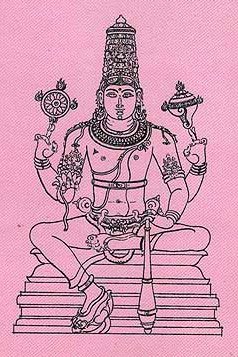
Pancaratra (पाञ्चरात्र, pāñcarātra) represents a tradition of Hinduism where Narayana is revered and worshipped. Closeley related to Vaishnavism, the Pancaratra literature includes various Agamas and tantras incorporating many Vaishnava philosophies.
Languages of India and abroad
Marathi-English dictionary
Source: DDSA: The Molesworth Marathi and English Dictionarybhūtaśuddhi (भूतशुद्धि).—f (S) A ceremony preliminary to worship or to important rites. It consists in purifying the body, i. e. the five bhūtēṃ or elements composing it, by the fire and amṛta (water of immortality) reposited in the forehead. By the fire the old bhūtēṃ are reduced to ashes, and by the amṛta sprinkled over them together with the recitation of a mantra, reconstitution and regeneration of the body are effected.
Marathi is an Indo-European language having over 70 million native speakers people in (predominantly) Maharashtra India. Marathi, like many other Indo-Aryan languages, evolved from early forms of Prakrit, which itself is a subset of Sanskrit, one of the most ancient languages of the world.
Sanskrit dictionary
Source: DDSA: The practical Sanskrit-English dictionaryBhūtaśuddhi (भूतशुद्धि).—f. purification of the elements (of the body).
Derivable forms: bhūtaśuddhiḥ (भूतशुद्धिः).
Bhūtaśuddhi is a Sanskrit compound consisting of the terms bhūta and śuddhi (शुद्धि).
Source: Cologne Digital Sanskrit Dictionaries: Aufrecht Catalogus Catalogorum1) Bhūtaśuddhi (भूतशुद्धि) as mentioned in Aufrecht’s Catalogus Catalogorum:—tantra. B. 4, 260. Haug. 50. Rādh. 27. H. 358. Bp. 299. Sūcīpattra. 41. Quoted in Śāktānandataraṅgiṇī Oxf. 104^a.
2) Bhūtaśuddhi (भूतशुद्धि):—tantra. [Bhau Dāji Memorial] 64. Fl. 399. Gov. Or. Libr. Madras 62.
3) Bhūtaśuddhi (भूतशुद्धि):—[dharma] L.. 538. Il. (different).
4) Bhūtaśuddhi (भूतशुद्धि):—tantra. As p. 134 (Paṭala 1-17). Hr. Notices Vol. Xi, p. 14.
Source: Cologne Digital Sanskrit Dictionaries: Monier-Williams Sanskrit-English Dictionary1) Bhūtaśuddhi (भूतशुद्धि):—[=bhūta-śuddhi] [from bhūta > bhū] f. ‘removal of evil demons’, Name of a ceremony, [Religious Thought and Life in India 197]
2) [v.s. ...] Name of a Tantra.
[Sanskrit to German]
Sanskrit, also spelled संस्कृतम् (saṃskṛtam), is an ancient language of India commonly seen as the grandmother of the Indo-European language family (even English!). Closely allied with Prakrit and Pali, Sanskrit is more exhaustive in both grammar and terms and has the most extensive collection of literature in the world, greatly surpassing its sister-languages Greek and Latin.
Kannada-English dictionary
Source: Alar: Kannada-English corpusBhūtaśuddhi (ಭೂತಶುದ್ಧಿ):—[noun] a ritual performed to remove evil spirits before any auspicious action as worship.
Kannada is a Dravidian language (as opposed to the Indo-European language family) mainly spoken in the southwestern region of India.
See also (Relevant definitions)
Partial matches: Shuddhi, Bhuta.
Starts with: Bhutashuddhimantra, Bhutashuddhipranapratishtha.
Full-text (+5): Keshavadinyasa, Murtipanjaranyasa, Rishicchandonyasa, Tattvanyasa, Keshavadi, Mantradevatanyasa, Shadanganyasa, Tattva, Matrika, Murtipanjara, Rishicchandas, Shadanga, Yoga, Mantradevata, Nyasa, Bhutamandala, Shivarcana, Pranapratishtha, Sitamantra, Bhutashuddhimantra.
Relevant text
Search found 12 books and stories containing Bhutashuddhi, Bhūtaśuddhi, Bhuta-shuddhi, Bhūta-śuddhi, Bhutasuddhi, Bhuta-suddhi; (plurals include: Bhutashuddhis, Bhūtaśuddhis, shuddhis, śuddhis, Bhutasuddhis, suddhis). You can also click to the full overview containing English textual excerpts. Below are direct links for the most relevant articles:
The Devi Bhagavata Purana (by Swami Vijñanananda)
Chapter 8 - On Bhūta Śuddhi < [Book 11]
Chapter 40 - The External Worship of the Devī < [Book 7]
Chapter 11 - On the merits of the Devī in the story of Satyavrata < [Book 3]
Bhakti-rasamrta-sindhu (by Śrīla Rūpa Gosvāmī)
Verse 1.2.137 < [Part 2 - Devotional Service in Practice (sādhana-bhakti)]
Shat-cakra-nirupana (the six bodily centres) (by Arthur Avalon)
The Garuda Purana (by Manmatha Nath Dutt)
Chapter XXIII - Description of another form of Shiva worship < [Agastya Samhita]
Shakti and Shakta (by John Woodroffe)
Appendix II - Quelqes Observations Sur Le Rituel Hindou < [Appendices]
Chapter XXI - Hindu Ritual < [Section 3 - Ritual]
Chapter XXVI - Śākta Sādhanā (the Ordinary Ritual) < [Section 3 - Ritual]
Varahi Tantra (English Study) (by Roberta Pamio)
Related products

